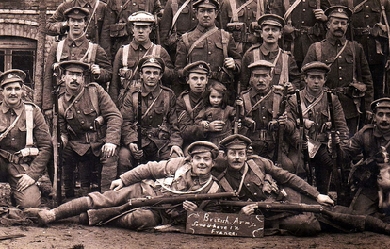
Ambulances
by Sophia Brookshire
As Philip Larkin grew older, he became more and more obsessed with the concept of death. Larkin was largely considered to be an atheist; so for Larkin death didn't mean passing through the pearly gates into heaven, instead death was an all-powerful entity that could take you at any time to some unknown terrifying abyss. In Larkin's poem Ambulances, he uses an ambulance to convey both the loneliness of age and death, and the fact that death comes to all, sooner or later. Ambulances are generally vehicles that are associated with help and rescue, but in this poem the ambulance is portrayed in an ominous light, in order to jar the reader's sense of security. In this poem, the ambulance is in effect like the Grim Reaper, who comes to collect souls and ferry's them into the afterlife.
Larkin's uses the confessional to demonstrate the difference a generation makes; the previous generation would have gone to church to heal themselves, while the new generation with its new health care system went to hospitals; thus, the ambulance becomes the modern day confessional. Confessionals are enclosed stalls in a Roman Catholic Church in which priests hear confessions. "Closed like confessionals" is a simile; the closed door of the confessional is similar to the confined space of an ambulance when its doors are closed. Like a confessional, an ambulance can be a very vulnerable place for its inhabitants; you bear your soul in a confessional, and put your life/body in the hands of the paramedics. Ambulances thread-to make one's way through or between-the noontime rush-hour; they will also most likely have their siren on, which draws the stares of strangers. The ambulance doesn't stop to explain; it is on a mission, to save a life. Some are startled by the siren and the presence of the ambulance, while others are curious about what has happened. The appearance of the ambulance also tends to frighten, because it means that someone out there, no one knows who, could be injured, dying, or even dead. The color of the ambulance is a "light glossy grey," and it has a plaque with the emergency services coat of arms on the side. It is fitting that the ambulance is painted grey, because ambulances often serve as the grey area between life and death; some who enter the ambulance alive leave it dead. The last two lines are particularly ominous; you never know when it will be your turn to die, but rest assured that one day it will be your turn to die. Death is inevitable and all-powerful.
Everyone stops what they are doing to look at the ambulance. Children stop playing and stand strewn-scattered-on door steps and streets; women stop shopping; dinners are left on the stoves, all so that they can watch as the ambulance's newest victim be taken away. The person being put into the ambulance is void of any identity; he or she is simply described as having a "wild white face." The whiteness could be referring to two things: first, the person has grey hair, and from that we can infer that the person is older; and second, that all of the blood has gone from the person's face due to fear or illness. Wild probably refers to the patient being scared or having some psychosis, seizure, or other ailment that would require hospitalization. The person is carried into the ambulance/confessional on a stretcher and secured into place for the long journey to the hospital/afterlife.
The men, women, and children standing around watching this spectacle all sense for a moment the solution for the emptiness that they all feel inside; the solution is death. Death lies under all we do; the fear of dying drives us to live and take chances. For a second they feel whole with the knowledge that death is permanent, blank, and true; death offers an end from all of their fears, worries, and obligations, but dying also means not being able to experience happiness and love anymore. Nothing is greater or more powerful than death; death is the ultimate truth. "Poor soul" is italicized to emphasis the doom felt by the spectators and the inevitably of the person's death; by referring to the person as a "soul" the narrator is telling us that that person will be dying soon. The spectators whisper as a way to calm their nerves, and in an effort not to attract death. They are sad for the person in the ambulance, but they are also happy that it wasn't their time, yet.
The person in the ambulance is borne-carried-away to the hospital (or metaphorically to the afterlife), in the deadened air. The "deadened air" has a twofold meaning: first, there is death in the air, meaning someone is going to die soon; and second, the noontime noises have quieted down in reverence for the "poor soul" being taken away. The people, who were standing around watching the paramedics load the person into the ambulance and then drive off, is reminiscent of a funeral; the people at the "funeral" had a moment of silence for the person, as people do at traditional wakes and funerals. The person's life is "nearly at an end;" he/she will take with them the "unique random blend of families and fashions" that has made up their unique life. Happiness and love are fleeting, but death is the only thing that we can truly count on in life.
The person's ties to their earthly existence are fading. Gone are the days of love with loved ones. He/she is now unreachable inside the ambulance. The traffic parts to let the ambulance through; the closer to the hospital they get, the further that person is from their life. These are his/her last moments. Who we are, no longer matters, death is all there is now.








